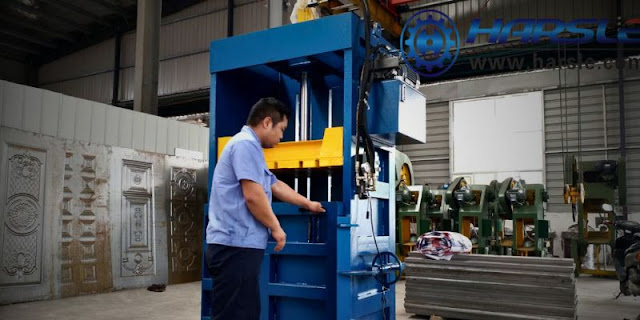In the industrial sector, the process of compacting materials into dense, manageable forms is critical for efficient storage, transportation, and recycling. One of the most effective tools for this purpose is the hot baling press, a machine designed to compress various materials such as metal, cotton, and rubber into dense bales.
This blog delves into the hot baling press for metal cotton rubber, exploring how they work, their applications, and the benefits they offer across different industries.
1. What is a Hot Baling Press?
A hot baling press is a type of hydraulic press designed to compress materials under high pressure and temperature to create dense, compact bales. Unlike cold baling, which relies solely on pressure, hot baling incorporates heat into the process.
The heat softens or partially melts the material being baled, allowing it to be molded more easily into a compact shape. This method is particularly effective for materials like metal, cotton, and rubber, which benefit from the added heat during the compression process.
a. Components of a Hot Baling Press
A typical hot baling press consists of several key components:
Hydraulic System: This system generates the high pressure required to compress the material.
Heating Elements: The heating elements are responsible for raising the temperature of the material during the baling process. These elements are usually embedded within the press plates or around the chamber to ensure even heating.
Press Plates and Chamber: The press plates are the surfaces that come into contact with the material, applying pressure to compress it. The chamber is the enclosed space where the material is placed before compression.
2. Applications of Hot Baling Presses
Hot baling presses are used in a wide range of industries, each with its unique requirements. The most common applications include:
a. Metal Baling
In the metal recycling industry, hot baling presses are used to compress scrap metal into dense bales. The heat helps to soften the metal, allowing it to be more easily molded into a compact shape. This process is particularly useful for recycling aluminum, copper, steel, and other non-ferrous metals. The resulting bales are easier to transport to recycling facilities and take up less space, reducing storage costs.
b. Cotton Baling
In the textile industry, cotton is often baled to facilitate storage and transportation. Hot baling presses apply heat to the cotton fibers, making them more pliable and easier to compress. The resulting bales are dense and uniform, making them ideal for shipping and storage. This process also helps to preserve the quality of the cotton by reducing the risk of contamination during handling.
3. Advantages of Hot Baling Presses
The use of hot baling presses offers several advantages across different industries:
a. Increased Density
The combination of heat and pressure in hot baling presses results in bales that are denser and more compact than those produced by cold baling methods. This increased density reduces the volume of the material, making it easier to store and transport.
b. Improved Material Handling
Hot baling makes materials like metal, cotton, and rubber more manageable. The bales are uniform in shape and size, facilitating easier stacking, storage, and transportation.
4. Future Trends in Hot Baling Press Technology
As technology continues to advance, the design and functionality of hot baling presses are likely to evolve. Some potential future trends include:
Automation: The integration of automation and robotics into hot baling presses could streamline the baling process, reducing the need for manual intervention and increasing production efficiency.
Energy Efficiency: Advances in heating technology could lead to more energy-efficient hot baling presses, reducing the environmental impact and operating costs.
Conclusion
Hot baling presses are essential tools in various industries, offering a reliable and efficient way to compact materials like metal, cotton, and rubber. By understanding the mechanics of these machines and their applications, businesses can optimize their operations, reduce costs, and improve their overall efficiency.
As technology continues to evolve, the future of hot baling presses looks promising, with innovations that will further enhance their performance and sustainability.








0 Comments